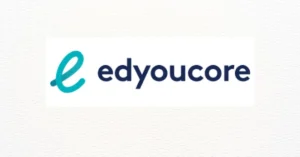In a digital world increasingly reliant on structured data and AI-powered insights, metaphactory course tutorials have emerged as a powerful gateway to mastering semantic technologies. Whether you’re a data scientist, enterprise architect, or curious technologist, learning how to harness metaphactory can transform your ability to model, query, and visualize complex knowledge graphs. Designed around the principles of FAIR data (Findable, Accessible, Interoperable, Reusable), metaphactory empowers organizations to turn disconnected data into strategic assets.
This article offers a detailed exploration of what metaphactory is, why it matters, and how its course tutorials can equip professionals and teams with the tools to drive data-driven innovation. We cover everything from core concepts and learning modules to real-world applications, updated training structures, and what you can expect from hands-on metaphactory education.
What Is Metaphactory?
Metaphactory is a platform for building knowledge graph applications on top of RDF-based data. It offers a user-friendly environment to interact with complex data by abstracting technical layers and allowing non-technical users to engage with semantic information. Built to run on top of triple stores like GraphDB or Blazegraph, metaphactory helps organizations build scalable semantic solutions for search, discovery, data integration, and AI-readiness.
At its core, metaphactory supports the full lifecycle of knowledge graph projects—from ontology design and linked data curation to SPARQL querying and frontend generation. Its modular, low-code nature allows businesses to model their data according to standards like SHACL, OWL, or SKOS, while also allowing developers to create custom views and dashboards for users.
Why Are Metaphactory Course Tutorials Essential?
The rise of data interoperability, AI, and digital twins demands professionals with semantic web literacy. However, RDF, SPARQL, and ontology modeling are not typically taught in traditional computer science programs. That’s where meta-phactory course tutorials come in.
These tutorials provide structured, progressive learning paths that help individuals and teams:
- Understand knowledge graph fundamentals
- Model real-world domains with ontologies
- Perform complex SPARQL queries with confidence
- Create intuitive user interfaces for semantic apps
- Integrate and federate disparate data sources
With businesses increasingly adopting semantic tech in pharmaceuticals, manufacturing, finance, and smart cities, metaphactory education equips users with critical future-ready skills.
Structure of Metaphactory Course Tutorials
Modern metaphactory course tutorials are typically organized into three tiers—introductory, intermediate, and advanced—often supplemented by specialized use-case modules. Below is a breakdown of each level:
1. Introductory Tutorials: Semantic Web Basics
These tutorials are ideal for beginners and focus on foundational topics:
- Introduction to RDF, URIs, and triples
- Overview of the semantic web stack (RDF, RDFS, OWL)
- Navigating metaphactory’s interface and dashboard
- Basic SPARQL: SELECT and WHERE clauses
- Understanding ontologies vs taxonomies
Goal: Familiarize learners with the conceptual framework of knowledge graphs and metaphactory’s role as a platform.
2. Intermediate Tutorials: Ontology Building & Data Modeling
Once users understand the basics, tutorials dive into applied modeling:
- Designing ontologies with OWL and SHACL
- Creating custom classes, properties, and relationships
- Importing external vocabularies (e.g., FOAF, Dublin Core)
- Building domain-specific models (e.g., biomedical, industrial)
- Version control and ontology reuse strategies
Goal: Equip learners with the skills to model domain knowledge semantically, using metaphactory’s design tools and integrated editors.
3. Advanced Tutorials: Querying, App Building, and Federation
These tutorials are intended for users aiming to build complete applications:
- Advanced SPARQL: FILTER, OPTIONAL, UNION, CONSTRUCT
- Federated SPARQL queries across multiple endpoints
- Developing search interfaces with metaphactory templates
- Customizing user dashboards with low-code components
- Access control, user roles, and data governance
Goal: Enable learners to go from schema design to building a full-featured, user-facing semantic application.
Hands-On Learning: Project-Based Tutorials
One of the standout features of metaphactory tutorials is their hands-on, project-based approach. Rather than abstract exercises, learners build real-world solutions like:
- A semantic product catalog for an e-commerce use case
- A scientific publication explorer for academic research
- An industrial asset registry for smart manufacturing
- A clinical trial knowledge base for pharma companies
Each project includes:
- Dataset provisioning and RDF conversion
- Ontology selection or creation
- SPARQL query writing for specific user questions
- UI building with pre-built metaphactory components
Industry-Specific Learning Tracks
Metaphactory course designers understand that one size does not fit all. As such, they offer industry-specific learning tracks, often in collaboration with domain experts:
1. Life Sciences
- Modeling biomedical ontologies (e.g., MeSH, SNOMED)
- Integrating clinical trials, drugs, and gene data
- Enabling data FAIRification for regulatory compliance
2. Manufacturing and IoT
- Building digital twins of industrial assets
- Linking sensor data with machine metadata
- Creating dashboards for predictive maintenance
3. Government & Public Sector
- Transparent data reporting using linked open data
- Enabling citizen services through federated knowledge graphs
- Structuring regulatory information for search and reuse
4. Financial Services
- Tracking company entities, transactions, and events
- Modeling compliance requirements and audit trails
- Reducing risk with intelligent data discovery
These tracks ensure that users learn skills that are not only technical but aligned with sector-specific challenges and data.
Certification and Learning Pathways
As semantic technologies become more critical in digital infrastructure, metaphactory certifications are gaining recognition. After completing certain modules, learners can earn:
- Meta-phactory Certified Semantic Analyst
- Meta-phactory Certified SPARQL Specialist
- Meta-phactory Application Builder Certification
Some enterprise customers use these certifications as part of internal upskilling programs, aligning with digital transformation goals.
Recent Updates to Metaphactory Learning Ecosystem
As of 2025, metaphactory course tutorials have integrated several new features and updates:
- Live, code-along virtual labs via browser-based environments
- Gamified learning modules with badges and progress tracking
- Multi-language support for international teams
- Microlearning options with 10-minute topic videos
- Collaborative workspaces for team-based ontology projects
Additionally, a new AI assistant is now embedded into metaphactory’s learning portal, allowing learners to ask context-aware questions in natural language—reducing friction and increasing accessibility for beginners.
Tools and Resources You’ll Learn to Use
Metaphactory course tutorials familiarize learners with a wide range of tools essential to building semantic applications:
| Tool / Feature | Purpose |
| RDF Editors | Create and edit RDF triples |
| SHACL Validators | Ensure data conforms to schema |
| SPARQL Console | Write and test queries |
| Ontology Library | Import and manage vocabularies |
| UI Components | Build user-facing apps without coding |
| Graph Visualization | Explore relationships and data patterns |
These tools combine to offer a robust environment for knowledge-driven development.
Benefits of Completing Metaphactory Course Tutorials
- Better Decision-Making: Understand your data more deeply with semantic modeling
- Cross-Disciplinary Collaboration: Enable domain experts and engineers to speak a shared language
- Career Growth: Semantic skills are increasingly in demand across industries
- Enterprise Readiness: Equip teams to deliver production-ready knowledge graph applications
- Innovation Enablement: Rapidly prototype and scale digital solutions using connected data
Conclusion
As the business world moves toward data ecosystems that prioritize meaning, structure, and interoperability, metaphactory course tutorials are more relevant than ever. They offer a practical, comprehensive way to acquire the semantic web skills necessary for innovation across sectors.
Through structured modules, project-based learning, and industry-specific guidance, these tutorials empower users to go beyond data management—they equip them to architect knowledge ecosystems. In doing so, metaphactory is not merely a platform, but a conduit for digital transformation grounded in structured intelligence.
Whether you’re building a clinical knowledge graph, streamlining enterprise search, or creating AI-ready datasets, metaphactory course tutorials open the door to new capabilities and opportunities.
FAQs
1. Who should take metaphactory course tutorials?
Metaphactory tutorials are ideal for data scientists, enterprise architects, IT professionals, and domain experts looking to model, query, or visualize complex data relationships using semantic technologies.
2. Do I need programming experience to learn meta-phactory?
Not necessarily. While some familiarity with RDF and SPARQL helps, meta-phactory offers low-code tools and visual interfaces, making it accessible to non-developers.
3. Are these courses suitable for enterprise teams?
Yes. Many organizations implement metaphactory tutorials in corporate learning programs, especially for roles in data engineering, governance, and innovation teams.
4. How long does it take to complete a learning track?
Each track varies, but most foundational tutorials can be completed in 4–6 hours. Project-based tracks may take longer depending on depth and complexity.
5. Is there a certification available after completing the tutorials?
Yes. Learners can earn certifications like Metaphactory Certified Semantic Analyst or SPARQL Specialist upon completing assessments tied to their learning path.
For more information, click here.









